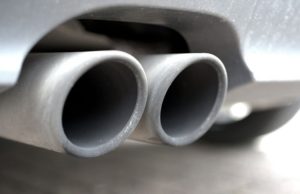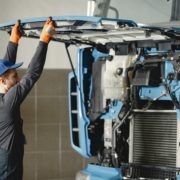How Diesel Engines Have Become Cleaner Than Ever
Diesel engines are durable, fuel-efficient and provide the necessary power and torque for moving big loads. As these engines have become more powerful, they have become cleaner! Recent improvements in technology have reduced emissions, made exhaust cleaner, and improved the fuel efficiency of trucks, even as the loads have become larger.
Now, commercial semi-trucks no longer expel black smoke, leave a lingering diesel stench as they pass, or sound loud and aggressive. Pound for pound, they are some of the cleanest vehicles available. Two major advancements went into making diesel engines cleaner than they have ever been before: better fuel and exhaust after-treatment technologies.
Better Fuel
Much like lead in gasoline, diesel had to contend with sulphur. One of the major improvements has been to diesel itself. Trucks now run on ultra-low sulphur diesel (ULSD) fuel, which has a  sulphur content of 15 parts per million (ppm) compared to the 500-ppm level in on-road diesel before October 2006. This is now the standard for both on-highway and off-highway diesel engines in North America and Europe, and ULSD cuts the soot emissions of diesel trucks by 10 percent!
sulphur content of 15 parts per million (ppm) compared to the 500-ppm level in on-road diesel before October 2006. This is now the standard for both on-highway and off-highway diesel engines in North America and Europe, and ULSD cuts the soot emissions of diesel trucks by 10 percent!
ULSD isn’t going to be the last advancement in cleaner fuel. Research is showing that diesel engines can operate on advanced biofuels and renewable fuels. These fuels are capable of reducing greenhouse gas emissions by at least 50 percent. The diesel engine gives manufacturers the ability to develop new generations of high-performance engines and emission control devices. Most already use diesel exhaust fluid (DEF) that is sensitive to the sulphur levels in the fuel.
The introduction of cleaner diesel fuels is a central part of the clean diesel system designed to meet near-zero emissions standards. How the diesel engine uses this fuel still creates particulate matter, but commercial trucks are now equipped with filtration systems to clean up their emissions!
Exhaust After-Treatment
The combustion of a diesel engine gives it greater energy efficiency than its gasoline counterpart. However, diesel engines also release nitrogen oxide, or NOx, in their emissions. This is because, in a typical diesel engine, the process dilutes emissions to minimize them. This is the routing of low-oxygen combustion gases from the previous engine cycle back into the air intake. It’s designed to reduce the temperature and oxygen concentrations in the fuel-air mixture, but while the lower temperatures mitigate NOx, it doesn’t consume all the fuel.
 What’s left includes particles of burned carbon, which you’ll know better as soot. To offset this, engine manufacturers and researchers have had to work long and hard to preserve the efficiencies and advantages of the diesel engine. One of the most impactful pieces of technology is exhaust after-treatment filters like diesel particulate filters (DPFs). These remove particulate matter from the exhaust, and under some conditions, they can be almost 100% efficient.
What’s left includes particles of burned carbon, which you’ll know better as soot. To offset this, engine manufacturers and researchers have had to work long and hard to preserve the efficiencies and advantages of the diesel engine. One of the most impactful pieces of technology is exhaust after-treatment filters like diesel particulate filters (DPFs). These remove particulate matter from the exhaust, and under some conditions, they can be almost 100% efficient.
Along with DPFs, some other pieces of technology include exhaust gas recirculation (EGR), diesel oxidation catalysts (DOC), and selective catalyst reduction (SCR). Fleet managers should have these devices cleaned every 240,000 to 650,000 kilometres.
As we hear more about carbon emissions related to transportation, it’s important to know that the trucking industry has worked tirelessly to cut them down. A lot of research and manpower has gone into making transport trucks more reliable, powerful, and environmentally-friendy!











